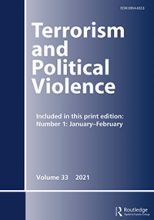This paper reports on a study that is part of a project which aims to develop a multimodal analytical approach for big data analytics, initially in the context of violent extremism. The findings reported here tested the application of natural language processing models to the text of a sample of articles from the online magazines Dabiq and Rumiyah, produced by the Islamic extremist organisation ISIS. For comparison, text of articles found by reverse image search software which re-used the lead images from the original articles in text which either reported on or opposed extremist activities was also analysed. The aim was to explore what insights the natural language processing models could provide to distinguish between texts produced as propaganda to incite violent extremism and texts which either reported on or opposed violent extremism. The results showed that some valuable insights can be gained from such an approach and that these results could be improved through integrating automated analyses with a theoretical approach with analysed language and images in their immediate and social contexts. Such an approach will inform the interpretation of results and will be used in training software so that stronger results can be achieved in the future.
